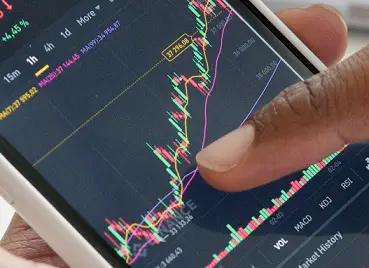On Thursday, US stocks extended losses, after the CPI report came in at a hotter than expected 9.1% and investors considered the possibility of a 100 basis point rate hike. Also affecting investors was that Wall Street’s big banks issued less than stellar earnings reports, and gave slightly pessimistic outlooks on the immediate future.
The S&P 500 and Dow closed down slightly, after rising back from deeper lows of almost 2%. The S&P 500 closed down 0.3% and the Dow was down 0.5%. The Nasdaq battled to close just slightly above breakeven.
JP Morgan reported a bigger than expected 28% drop in second quarter profits, blaming the discrepancy on a $1.1 billion provision for credit losses amidst concerns over a possible economic slowdown. Shares were down at the close by 3.5%.
CEO Jamie Dimon said, “In our global economy, we are dealing with two conflicting factors, operating on different timetables. The U.S. economy continues to grow and both the job market and consumer spending, and their ability to spend, remain healthy. But geopolitical tension, high inflation, waning consumer confidence, the uncertainty about how high rates have to go and the never-before-seen quantitative tightening and their effects on global liquidity, combined with the war in Ukraine and its harmful effect on global energy and food prices are very likely to have negative consequences on the global economy sometime down the road.”
Meanwhile Morgan Stanley revealed it had missed analyst’s expectations, as volatile market conditions weighed down its investment banking revenue. Shares ended 0.3% lower after temporarily sinking 2%.
These reports also weighed on the sector as a whole, as chares of Citi and Wells Fargo dropped 3% and 0.9% respectively ahead of their earnings reports, coming out Friday.
These moves came after all three major indexes fell Wednesday, after the new CPI data came out showing inflation was still rising above analyst expectations.
Allianz Investment Management Senior Investment Strategist Charlie Ripley said. “Markets had a knee-jerk reaction after the eye-popping inflation numbers and the headline number of 9.1% only makes the job that much harder for the Fed. As a result, the Fed is likely going to send a hawkish message at the July meeting, and it would be a mistake to think that a rate hike less than 75 basis points is in the cards.”
After the CPI data, investors even began talking about 100 basis point hikes in the Fed funds rate at the next FOMC meeting July 26-27, perhaps the most aggressive monetary tightening seen since the early 90’s.
Federal Reserve Board of Governors member Christopher Waller however came out and voiced support for a 0.75% rate hike at the next meeting, but said he would back a 1% hike if upcoming economic releases show strong consumer spending.
Following Wednesday’s CPI data, Atlanta Fed President Raphael Bostic said, “Everything is in play,” and when asked if that included a 100 basis point hike, he said, “it would mean everything.”
The producer price index for final demand, which measures wholesale and business prices, rose 11.3% year over year in June, and 1.1% over the previous month, the Labor Department reported Thursday, showing inflationary pressures are also operating at the wholesale level.

